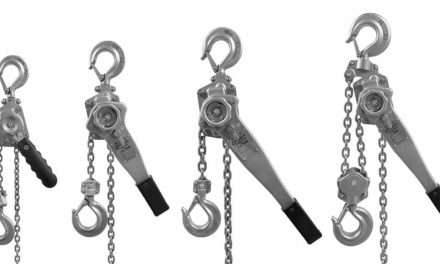By: Doug Niemtschk, Contributor
According to OSHA, personnel experience much more than 3,500 injuries and illnesses linked to heat every single calendar year. Protecting against warmth-related
health problems and injuries is crucial. In fact, OSHA felt it was so important, they executed a Countrywide Emphasis Program (NEP) on April 8, 2022, that focused over 70 significant-chance industries. The NEP will conclude in 2025. The NEP will glance at an employer’s prepared warmth sickness and harm software. This post discusses some factors that ought to go into producing a excellent warmth illness and injury avoidance program (HIIPP).
Assessing Heat Conditions
As industrial hygienists or security experts, it is crucial that we to start with be equipped to anticipate, recognize and evaluate heat circumstances that can end result in damage or health issues. When we do that, there have to be specific controls carried out — and then affirmation that they are working properly.
A single superior way to anticipate when the warmth is going to be a problem is to listen to the alerts place out by the Nationwide Climate Services. Your area news will also announce what the heat index is.
Figure out exactly where your risks are greatest. Chance components for staff can incorporate absence of warmth acclimatization, prior warmth illness, minimal physical fitness and the use of some drugs (e.g., blood force prescription drugs, antihistamines, decongestants, and so on.).
Assessing the heat threat prospective ought to be finished by measuring the warmth the place the get the job done is being completed. This usually means working with a Damp Bulb Globe Temperature (WBGT) check. In contrast to the warmth index, the WBGT check will evaluate the consequences of direct photo voltaic radiation on an uncovered surface, this sort of as the skin or clothing. This part of the instrument is named the Black Globe Temperature (TG) sensor. It takes advantage of a sensor surrounded by a black globe.
A WBGT keep an eye on also measures the ambient air temperature (TA) and proportion of relative humidity (WB). All three measurements are then added jointly applying the adhering to formula: WBGT = .7 WB + .2 TG + .1 TA. Most WBGT screens do this calculation for you and have a single selection output. Your written HIIPP should indicate who is liable for using these measurements and when.
Controlling Heat-Related Incidences

Analyzing the heat risk possible must be performed by measuring the heat the place the function is currently being completed. © High-quality Inventory Arts – stock.adobe.com
As soon as you have taken your WBGT measurements, you want to decide what you will do to manage the danger of warmth-similar sicknesses and accidents. One manage evaluate is the use of a work-relaxation cycle. The greater the WBGT temperature, the for a longer time the breaks must be in any provided hour. For illustration, at a WBGT temperature of 84° Fahrenheit, with moderate operate, a get the job done-rest cycle of 50 minutes operate and a 10-moment split may possibly be proper. A WBGT temperature that is better than 90 will will need a a great deal for a longer period split (e.g., 30 minutes). Your HIIPP really should develop a table that defines what these restrictions are.
Use of the buddy technique is yet another good regulate evaluate. All folks ought to be educated to identify the indicators and signs and symptoms of warmth-associated health problems (e.g., warmth pressure, warmth stroke, and so forth.). Subsequent, everyone should really be assigned a husband or wife or “buddy” that will maintain an eye out for the signals and indications. Supervisors really should also observe for indicators and signs. If any are found, the proper response requires to take place (i.e., transfer to shaded area, consume lots of fluids for warmth stress warmth stroke will require fast professional medical notice). Your HIIPP ought to spell all of this out.
In the NEP, OSHA suggests that your HIIPP have other control steps, as properly. These incorporate obtain to shaded parts and amazing drinking drinking water acclimatization of new and returning personnel earlier start out moments to limit heat exposures, and so forth. Established expectations for how substantially drinking drinking water personnel must be consuming on an hourly foundation. When functioning in the warmth, consume a person cup (8oz) of drinking water every 15–20 minutes. Do not exceed 1½ quarts for each hour or 12 quarts for each working day consuming additional than this increases the chance for creating hyponatremia—a health care emergency, because the concentration of salt in the blood becomes also low. Program water breaks each hour and persuade h2o use. Provide treats, as effectively, due to the fact this helps with water retention.
In closing, it normally takes a prepare to protect against warmth accidents and sicknesses. OSHA expects it. Your staff members will need it. Acquire the time to produce an HIIPP. wmhs
The put up Warmth Anxiety Evaluation & Avoidance appeared very first on Office Substance Handling & Protection.





